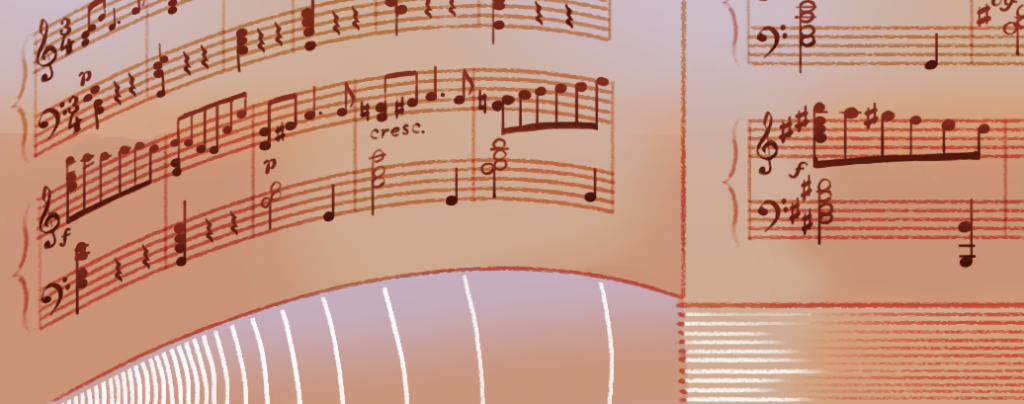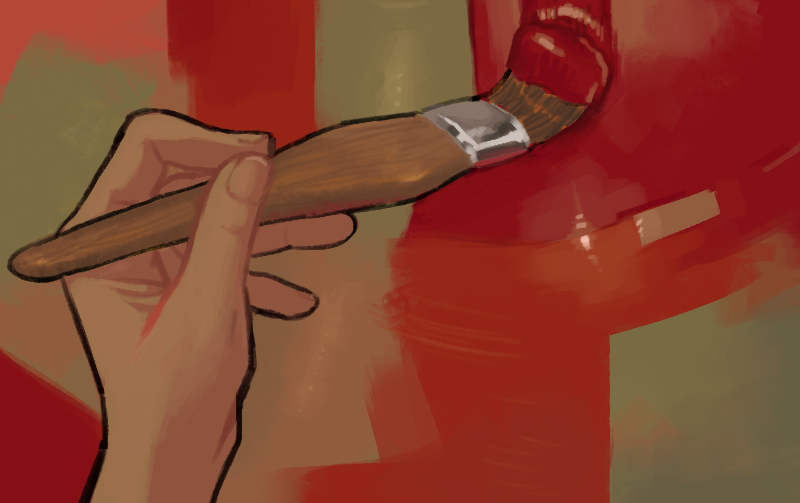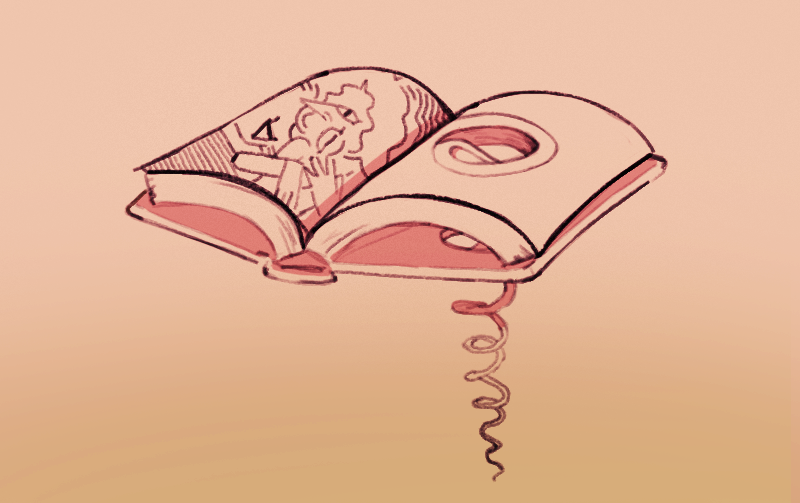We almost always assume that a writer is most influenced by other writers. They’ve read piles of books, they’ve decided that their skills best synch up with what a given number of other authors were doing, and they take a bit here, take a bit there, mix that in with their own sensibilities, and voila, a style is born.
I’ve always found this a slipshod way to go, in part because I don’t believe a great author ever has a single style. It’s one reason I rate Hemingway as at best mediocre, and often quite terrible, like the authorial version of some droning, one-note song that can’t leave its initial starting key or augment what it is doing with additional chords.
You should know, when you read a great author’s work, that it could only be by them, usually within the space of a single paragraph, even a clause. They have a way of inhabiting worlds and characters, while possessing reams of that most overlooked of all literary qualities: energy. Their energy will be unique, and it will animate their characters, and their narrative, in unique ways.
When I now compose, I’m at a point where things go quite quickly. I meet the characters, and it is those characters who are going to give me the story. I simply have to allow them their space and time to tell me what happened in their lives, how they connected with each other, how they broke with each other, what it was that informed their identities during this period when I am chronicling them. I always have the understanding that they were out there doing other things before we “met,” and that they will do other things after our time together has come to a close.
A friend who knows my work well likens it to giving birth. There is an element of that, but it’s more a matter of listening, and then, having listened, finding the energy — which will always be a unique, one-off form, given that the characters are unique and one-off — to help bring these beings to life — to life again, you might say.
If you write like that, people will believe that the characters in your work are out there somewhere in the world. Or that they could be. They could be a “regular” person, they could have four heads and a dragon’s tail, but they will be imbued with life in such a manner that the reader will allow that he or she could, perhaps, run into them one day.
After all: reader and character are now on intimate terms, given how the author has brokered introductions and helped facilitate a developing, and deep, relationship. A connection. Nothing in this life is more powerful than a connection. Connections are rare. But the very best authors provide the most powerful connections, often. That is why their work lasts. Their output becomes a storehouse for that thing we all crave more than anything else. And we can go to their storehouse any time, to get some of it, as we also search for it in other forms in our lives, or hope that it finds us, if we don’t have the courage to search, to be vulnerable, as becomes more and more the case of our age, as it has thus far played out.
I didn’t develop as a writer because of what I read, though I read absolutely everything I could get my hands on, and even now I would estimate that the only time during my days, any of them, when I am not reading is when I am working out, which is when I am writing in my head. As a kid, my writing was informed by records. When people write about music, what they usually fall back on is quoting lyrics. That’s lazy, and it’s not where the real writing often is in something like our best popular music. The real writing is in how a chord resolves itself, or a melody is given new life when it is cast in a different octave and key. We write the best of our stories that way, utilizing verbal arpeggios in dialogue, subtle changes in meter, with harmonies, staccato phrases, bridges that pass up a return to the verse to instead leap into the chorus again. Stories can fadeout, or they can come to the full-stop of all of the musicians of the band ending on the same note. It’s sticking a physical landing, as well as a narrative one, a musical one, a prose one.
I found that albums were also ordered in ways such that the individual songs functioned as contributing voices, or chapters, or stories, part of a succession of advancing narrative. They provided you new bits of information and meaning, and new characters, as you went along. The way the Beatles ordered the White Album gave it a flow and a progression in a manner that, when I read Tolstoy, I recognized it in prose. And words are also sounds, each syllable literally being a note, with sound and sense abetting each other in the works of writers I found instructive, like Fitzgerald and Keats. When I was older, painting, you might say, became my music. I spent long hours in museums — I still do — wandering the galleries, better understanding how brushstrokes function as sentences.
Some are longer, thicker, imparting waves of color — meaning — at once, each hair of the brush offering up its own portion of a larger, cohesive, multi-tiered statement. Other times, the painter’s quick curl of the wrist, the creation of a twist of color, opened up worlds, but also said to me that the painter wished to alert you to these worlds but not have you tarry too long in them, for there were others to get to as part of a larger journey. Sometimes, when I wrote, I would think,
“Okay, a curl of color here, a hooked stroke of the brush, that will help move people along to this part, which is filigreed, less bounding steps for the wayfarer, before the onset of the charcoal-blacks, underscored with that hint of copper tawniness, for when such and such of grave and galvanizing substance occurs.”
I also read a lot of ghost stories. Ghost stories to me seemed to blend this painterly approach — for they are so reliant on the creation of atmosphere — with a kind of echoing music. Less pure sound, and more the refraction of sound, a transmutation of what we think we are hearing to what we really are hearing. No writer was better at the creation of these atmospherics than Guy de Maupassant. You also couldn’t avoid him if you read this kind of thing, because he had a handful of stories that ended up in a lot of anthologies, and anyone who reads ghost stories starts off with anthologies as the individual pieces — the medium’s hit singles, let us say — lend themselves to the compiler’s art.
There is, for instance, “The Horla,” which is about a vampire in brain-clouding fever form, and “Who Knows?” in which furniture comes to life — far more compact versions of what would be subsumed, somewhat clumsily, as part of the Lovecraftian ethos. To encounter them is to feel like you are in need of a motion sickness pill for readers, as if the monsters therein were messing with your vital signs as well as your ability to rationally cogitate and process prose. No one can distill that madhouse essence of the unearthly trauma force under the bed better than Maupassant, dislocating us from our notions of traditional story arcs and instead confronting us with experiential placement in someone else’s overheated brain.
When a writer does something to such extremes, and does it like no one else has, our natural inclination is to assume that this is their specialty. There may be a sideways step or two — for Maupassant, “Ball of Fat,” his systematic skewering of the galling hypocritical nature of French classism, certainly fits this bill — but so often we think we know this writer.
I knew Maupassant in the sense that I had read much of his output, and I was accepting of the idea that he could always surprise me, that he was not the inhabitor of a single tonal or stylistic realm. So you might say that I was both caught unawares, and ready to be caught unawares, by his 1889 novel, Like Death, which was reissued not too long ago by NYRB Classics. This is one of those books where it all came together for me as a reader — the horror, the sound, the painterly techniques. Perhaps fittingly, then, it’s among our towering fictive achievements concerning the formal art of the brush and how far that kind of writerly painting can go, what other qualities it can assume.
Maupassant’s was a star-crossed life — he would die in 1893, at only 42 — and for all of his talent at brain-scrambling, he was a remarkable distiller of everything bound up in deciding to put the full feeling of one’s heart forward in attempted service to the heart of another. In short, the man understood love. He also understood the relationship between the coloristic, narrative qualities of brushstrokes for a painter, and the painterly, impastoed textural qualities of prose for a writer.
This is the plot of Like Death: late middle-aged Paris painter Olivier Bertin, a representative of a fading, pre-Impressionism style, is bored with salon life. He has a mistress, Anne, who is a Countess married to a fusty politician who is essentially a token friend to painter and mistress. The Countess has a daughter, Annette, who has just completed her schooling, and returned to Paris, looking like her mother once did, but with a greater spark of life emanating from the eyes — that spark that a great portraitist like Bertin used to attempt to render in his work: that is, before laurel-resting commenced, as he admits in one portion of his brain, and which he also never came close to truly depicting, as that painful, truth-bearing portion of his mind knows.
Bertin, of course, falls in love with the girl. This love will not be consummated. No showy displays of affection are made. The girl is promised to marry another. The painter mulls his emotional predicament, his entire being becoming inverted, as if everything on the inside has now been placed on the outside, with no buffer to provide any desensitization. Bertin is an exposed nerve incarnate.
Can you have less of a plot in a novel? Stendhal approached something not totally dissimilar, with his On Love, in which he sought to dissect every last strand — if love does have strands — of the emotion, though that was a nonfiction work. But what is remarkable about Maupassant is that, even if you are a curmudgeon in affairs of the heart, the novel reads as having endless twists. It’s almost like a Cubist painting, decades before that movement existed, with a single lens being fractured into dozens of piecemeal portals through which we look, a smorgasbord of viewfinders. For maximum intake of angles, Bertin even situates himself in strategic positions as he walks with the two women. “As on the previous evening, he was between them, held captive between their shoulders, and in order to see their equally blue eyes looking up at him with their tiny black specks, he spoke to them in turn, turning his head toward one, and then the other.”
This third person narrator sees this corner of the world — the world’s museum — as a painting. Certain colors function better with other colors. They bolster each other’s coloristic identities. Other times, the reverse is true, colors slouching into each other, losing definition, forsaking identity. Van Gogh understood this, which is why you can argue that his letters were more painterly than his paintings. I view him as a painting writer, rather than a writing painter, but clearly in his artistic worldview these two ostensibly disparate pursuits inevitably informed each other, because both had a common principle concern: the evincing of narrative, via the emergence of feelings — both for characters and viewers — within a story of coloristic gradations and shadings. Words can have an architectural quality, as readily as Van Gogh’s Yellow House; paint can have an auditory quality, in that you all but hear the crickets chirping in the the low-lying grass of the wheat field, when they are not drowned out by the squawks of passing crows overhead.
To pull off this blend, as Maupassant does in Like Death, you have to be a full-on prose poet, like Proust was, who can also conjure images in unmistakable detail within the mind’s eye of the reader. Note, too, the painter’s eye, as born out in prose; that blue with the black specks within it. A painter sets color inside of color, which the word-painter is now doing as well. Strolling about Paris on a hot afternoon with Annette, in this loose kind of chaperone role, Bertin makes his own tour of the heart’s various galleries, with each viewed exhibit, with this girl as some form of it centerpiece, brining him closer to his own essence.
“He was in one of those moods when the mind comprehends everything with keener pleasure, when the eyes see more perfectly, seem more receptive and clearer, when one finds a livelier joy in seeing and feeling, as if an all-powerful hand had revivified the earth’s colors, reanimated all conscious life and wound up in us, like a watch that had stopped, the activity of sensation.”
It feels like we can run our hand over prose like this and feel bumps, contours, stuck-out little ridges and tips of paint. Meanwhile, the Countess’s mother dies, which necessitates a stay in the country at the familial home, dislocating the painter from the unwieldy love triangle by means of (albeit temporary) geography.
The mother is now fully aware of his thoughts and not angry so much as, paradoxically, both depressed and enlivened. After all, the daughter resembles a previous version of herself, which reaffirms one bond, while making it clear that the grave has quite another with her awaiting as as well, which is now on plainer view thanks to her mother’s death.
We have what’s tantamount to a second triangle: dead mother, still youngish but aging mother, daughter who resembles that last mother in this progression. Yes, it’s maudlin thinking on the Countess’s part — Maupassant always leaves us with the understanding that the Countess is anything, in reality, but a faded gem. She’s still a looker, life still flows abundantly through her, radiates from her eyes, etc. But that is the heart, for you: it is almost too powerfully prismatic, with an ability to show something wonderful alongside its opposite, with both gallery rooms, if you will, having equal viability in the larger schema of reality. This can make a mess of our lives.
It certainly makes a mess of Bertin. His end, as it were, would appear risible if it was something you encountered in an outline for a novel, as the final result of a series of progressions. When you do a work like this, it’s hard to storyboard. It’s all “feel.” Like playing a solo jazz piano concert. You might go in with some ideas, but you’re doing your shaping as you sit there, and so was Maupassant.
That creates a cousinship between a short novel like this and a very short story like “The Horla.” They don’t feel extemporized, exactly, but mediumistic. There’s a difference; it’s as if that old control voice from The Outer Limits were taking possession of the writer, and that voice came into the project with a firm idea of where it wished to go. But as for Maupassant’s series of progressions, at the level of the plot they’re like what you expect — a cracking pop — when you bite into an apple. If you try to hook up with the kid of your married lover, that’s probably not going to go awesomely for you. External progression. The internal version of that apple being bitten, though, can quite naturally be an interlude of complete silence, with some other portion of who we are, that we may not have known existed, sounding instead, sending us off in search of its source, and, from there, better comprehension of its full-run of acoustical properties.
What we see with Like Death is how much action there is in this approach. Suspense. Characters are put in possession of new information, which makes them new people and new characters unto themselves, which introduces a new party to their decision-making processes. “His effort now was to sound his heart, to see clearly within himself, to read those intimate pages of the private book which seemed glued together and which only someone else’s fingers can even manage to separate.” The individual, in regard to the individual, is both on the terms of an intimate and a stranger. How those decisions are made, and why they are made, become the real matters of life and death, far more than the outcome of those decisions.
What a very different kind of potboiler. Zola did his realism-saturated version of it a time or two, as with The Masterpiece, another all-timer of a painter’s novel. His painting, though, was one of those canvases that can only be hung upon its own private wall, nothing else around it, a curator’s cry of “Behold!” whereas Like Death works best in dialogue with other paintings, even if those paintings are the emotional scenes from our own pasts that perpetually hang within us. “Ah, I had a love like that, once,” one thinks, which is analogous to taking out hammer and nail to hang one’s own painting besides the one wrought by Maupassant’s prose. There is no fever dream here, as with “The Horla.” This is the bucket of cold liquid, in the form of many hues of paint, that coats the insides. To leave the painting alone, hoping that it somehow, aleatorically comes together well upon drying, not sure if we’ve done enough, is to die, to embark upon the next round of color is to live. It’s all in the turn of the painter/writer’s wrist. •
Images illustrated by Barbara Chernyavsky.







